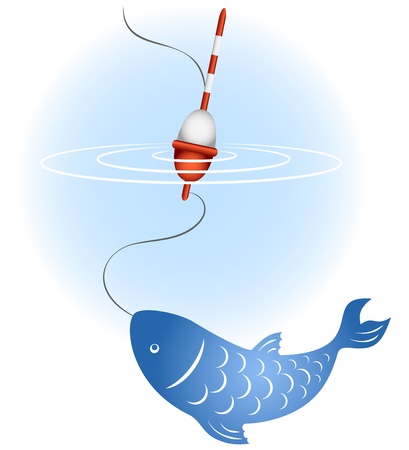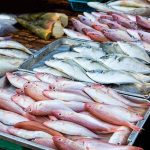1. Understanding Surface Disturbances
When youre fishing in open water, one of the most valuable skills you can develop is learning how to read the surface of the water. Surface disturbances often give away the presence of fish and can tell you a lot about their behavior and feeding patterns. By paying close attention to ripples, boils, baitfish activity, and even birds, you can increase your chances of finding active fish.
Common Types of Surface Activity
Below is a table showing some typical surface signs and what they usually mean:
| Surface Sign | Description | What It Indicates |
|---|---|---|
| Ripples | Small, consistent rings on the surface | Often caused by smaller fish feeding near the top; could attract larger predators |
| Boils | Circular disturbances where water appears to bulge or churn | Larger fish feeding just below the surface; good sign of predator activity |
| Baitfish Jumping | Small fish leaping out of the water in quick bursts | Usually a sign that they’re being chased by predators like bass or stripers |
| Bird Behavior | Diving birds or flocks hovering over certain areas | Birds often follow schools of baitfish, which means predatory fish might be nearby too |
Why These Signs Matter
Understanding these surface clues can help you identify where fish are active without using electronics. For example, if you see seagulls diving repeatedly in one spot, theres a good chance that a school of baitfish—and likely a few hungry game fish—are right underneath. Likewise, spotting boils or jumping baitfish can guide you on where to cast your line for the best results.
Tips for Spotting Surface Activity
- Use polarized sunglasses: These help reduce glare so you can see subtle surface movements more clearly.
- Stay quiet and observant: Avoid making noise when approaching an area so you don’t spook any nearby fish.
- Fish during low-light hours: Early morning and late evening are prime times when many species feed near the surface.
A Local Anglers Note
“Out here on Lake Lanier, I always keep my eyes peeled for bait balls getting busted on top. If I see birds diving or shad skipping across the surface, its go time,” says Mike, a Georgia-based weekend angler.
The more time you spend observing these signs, the better youll get at interpreting them quickly and accurately. Its like learning a new language—the language of fish behavior on open water.
2. Identifying Different Types of Fish Behavior
When youre out on open water, one of the best ways to locate fish is by paying close attention to what’s happening on the surface. Different species behave in unique ways when they’re feeding or moving near the top. By learning how to recognize these patterns—like tailing, slurping, and breaking—you can make smarter decisions about where to cast and what bait or lures to use.
Understanding Surface Behaviors
Fish don’t all act the same at the surface. Some gently sip food, while others crash through schools of baitfish like underwater rockets. Knowing which behavior belongs to which type of fish helps you target them more effectively.
Tailing
This is when a fish’s tail breaks the surface while it feeds head-down in shallow water. You’ll usually see this with species like redfish or carp. It’s a subtle movement, often mistaken for floating debris if you’re not looking closely. Tailing typically happens in calm, shallow areas where fish are rooting around for food.
Slurping
Slurping refers to fish softly sucking insects or small prey from the surface without making much splash. Trout are famous for this behavior, especially during hatches when bugs are abundant on top of the water. It looks like gentle dimples or tiny rings forming on the surface.
Breaking (or Busting)
Breaking is dramatic and hard to miss—its when predatory fish like striped bass, tuna, or bluefish charge through bait balls near the surface. You’ll see splashes, sprays, and sometimes even baitfish flying out of the water trying to escape. When you spot breaking fish, it usually means they’re aggressively feeding and its prime time to cast into the chaos.
Quick Guide: Behavior by Species
Use this table as a cheat sheet for identifying common surface behaviors by species:
| Species | Surface Behavior | Description |
|---|---|---|
| Redfish | Tailing | Tail tips break surface in shallow flats while feeding head-down. |
| Carp | Tailing | Similar to redfish; look for slow-moving tails in muddy shallows. |
| Trout | Slurping | Gentle sipping during insect hatches; creates small rings on water. |
| Bass (Largemouth/Smallmouth) | Breaking/Jumping | Occasional explosive strikes at topwater lures or fleeing prey. |
| Striped Bass | Breaking | Aggressive busting through schools of baitfish; big splashes. |
| Tuna & Bluefish | Breaking | Spectacular feedings on surface with bait leaping and birds diving. |
Why This Matters on the Water
The more you understand these behaviors, the better youll be at predicting where fish will be and what theyre eating. If you see slurping rings but throw a big noisy topwater lure, you might spook the trout instead of catching them. On the other hand, when you see breaking bait balls, that’s your cue to get a fast-moving lure into the mix quickly. Reading surface signs is like learning another language—it takes practice but pays off big time once you start speaking “fish.”

3. Interpreting Environmental Conditions
When youre out on open water looking for fish activity near the surface, knowing how to read environmental conditions can make all the difference. Weather, water temperature, and time of day all play a major role in fish behavior. Let’s break down how each factor affects surface activity and how you can use this knowledge to improve your chances of a successful catch.
Weather Patterns and Surface Activity
Weather can either turn the bite on or shut it down completely. Overcast days often encourage fish to feed closer to the surface since there’s less sunlight penetration, which makes them feel safer from predators. On bright, sunny days, fish might stay deeper or under cover until late afternoon.
| Weather Condition | Fish Behavior | Tips for Anglers |
|---|---|---|
| Overcast/Cloudy | More surface activity, active feeding | Use topwater lures or flies |
| Sunny and Clear | Fish hold deeper or near structure | Fish early morning or late evening; try shaded areas |
| Rainy (Light) | Increased activity due to oxygenation | Topwater action can be good; keep an eye on baitfish movement |
| Stormy/Heavy Rain | Fish become inactive or scatter | Avoid fishing during storms; wait for conditions to stabilize |
Water Temperature and Fish Behavior
Water temperature is another key factor that influences where and when fish will come to the surface. Different species have preferred temperature ranges, and when the surface water hits those sweet spots, youll likely see more activity.
| Water Temp (°F) | Common Species Active Near Surface | Notes |
|---|---|---|
| 50–60°F | Trout, Walleye | Sporadic topwater action; fish may rise during midday warmth |
| 60–70°F | Bass, Crappie, Bluegill | Good topwater potential; look for schooling baitfish |
| 70–80°F | Largemouth Bass, Catfish, Panfish | Peak topwater action early morning & late evening |
| >80°F | Bass (deep midday), Gar, Carp | Surface bite slows midday; focus on low-light hours |
The Role of Time of Day in Surface Feeding Patterns
The time of day is one of the easiest things to control in your fishing plan. Most species are more active near the surface during low-light periods—early morning and late evening—because they feel safer from predators and are chasing baitfish doing the same.
Best Times for Surface Fishing:
- Dawn (Sunrise – 2 hours after): Cooler temps and calm water make this prime time for topwater action.
- Dusk (2 hours before sunset – Sunset): Fish move up as light fades and temperatures drop slightly.
- Noon: Usually slower unless it’s overcast or windy enough to stir up baitfish.
- Nights (Especially Summer): Some species like bass and catfish feed heavily on the surface after dark.
Putting It All Together on the Water
If you combine all three factors—favorable weather, optimal water temperature, and ideal time of day—you’ll be in a strong position to read surface signs effectively. For example, if its an overcast summer morning with mild temps around 70°F, expect plenty of surface action from bass or panfish chasing bait schools. Watch for ripples, swirls, jumping baitfish, or birds diving into the water—these are your clues that its go-time.
The better you get at interpreting these environmental signals, the easier it becomes to anticipate where fish will show up next—and what tactics will work best once they do.
4. Using Polarized Sunglasses and Visual Aids
When youre fishing in open water, your ability to read the surface and detect fish behavior depends a lot on what you can see. Glare from the sun can make it tough to spot subtle movements or changes in water texture that signal fish activity. Thats where the right gear comes in—especially polarized sunglasses and other visual aids.
Why Polarized Sunglasses Matter
Polarized sunglasses are a game-changer for anglers. They cut through surface glare and allow you to see into the water more clearly. This helps you spot baitfish schools, underwater structures, or even the shadows of larger fish moving below the surface. Not all polarized lenses are created equal though, so choosing the right pair makes a big difference.
Choosing the Right Lens Color
| Lens Color | Best For | Conditions |
|---|---|---|
| Amber/Brown | Enhancing contrast | Partly cloudy to sunny days |
| Gray | True color perception | Bright, sunny conditions |
| Copper | Spotting fish in freshwater | Variable light conditions |
| Yellow/Gold | Low light visibility | Dawn, dusk, or overcast days |
Additional Visual Aids That Help You Spot Fish Behavior
Besides sunglasses, there are a few more tools that can help you spot whats going on at or just below the surface.
Useful Visual Tools for Open Water Fishing:
- Tinted Visors: Great for reducing glare when wearing a hat; helps focus your view on specific areas of the water.
- Polarized Clip-Ons: A good option if you already wear prescription glasses but want polarization benefits.
- Fish-Finding Binoculars: Some models are designed with polarized lenses and magnification to help you scan large open water areas.
- Casting Glass: A small viewing device some anglers use to look directly down into shallow open water zones from boats or docks.
Tips for Maximizing Visibility on the Water
- Keep Your Lenses Clean: Salt spray, smudges, or fog can reduce clarity—carry a microfiber cloth or lens wipes.
- Avoid Looking Into Direct Sunlight: Position yourself with the sun behind you whenever possible for better visibility.
- Watch for Water Texture Changes: Even small ripples or slick spots can indicate baitfish being pushed by predators below.
- Use Shade Lines: Fish often hang near shadow lines created by clouds, trees, or structures—your glasses will help pick up these subtle edges.
The right gear doesnt just make fishing more comfortable—it helps you read the water like a pro. With polarized sunglasses and a few smart accessories, youll be able to spot those subtle signs that most anglers miss.
5. Matching Tactics to Surface Clues
When youre out on open water, reading the surface can tell you a lot about whats happening below. Different types of surface activity hint at what kind of fish are present and how theyre feeding. To catch more fish, you need to match your fishing tactics—including lure type, presentation, and retrieval technique—to what youre seeing on the waters surface.
Topwater Busts: Fish Feeding on the Surface
If you see splashing, jumping baitfish, or birds diving into the water, it usually means predator fish are pushing bait up to the surface. This is a prime time to throw topwater lures.
Recommended Tactics for Surface Busts:
| Surface Clue | Best Lure Type | Presentation Tip |
|---|---|---|
| Baitfish jumping or scattering | Topwater popper or walking bait | Use a fast, erratic retrieve to mimic fleeing bait |
| Birds diving repeatedly in one area | Chugger or buzzbait | Cast near the commotion and retrieve through the frenzy |
| Fish breaking water in schools | Pencil bait or soft plastic jerkbait rigged weightless | Stay on the edge of the school to avoid spooking them |
Nervous Water or Subtle Ripples: Suspicious Movement Below
This kind of subtle surface action often points to fish cruising just beneath the surface. It’s not as dramatic as a full-on feeding frenzy, but it’s still a good sign.
Recommended Tactics for Nervous Water:
- Lure: Use subsurface lures like swimbaits or shallow-running crankbaits.
- Presentation: Slow and steady retrieve that mimics an injured baitfish.
- Tip: Watch for repeated patterns in the ripples—these could be travel routes.
Slick Spots and Oil Patches: Leftovers from a Feast
If you notice oily slicks or calm patches among choppy water, chances are predators have been feeding hard in that area. These signs suggest lingering activity and are worth targeting.
Tactics for Slick Spots:
- Lure: Try suspending jerkbaits or lightly weighted soft plastics.
- Presentation: Use a stop-and-go retrieve to keep your bait in the strike zone longer.
- Tip: Cast beyond the slick and work your bait back through it slowly.
No Visible Activity: Time to Go Deeper
If the surface is quiet with no visible signs of life, don’t pack it up just yet. Fish may still be around—they’re just hanging deeper. This is when subsurface presentations shine.
Tactics for Quiet Surface Conditions:
| Condition | Lure Choice | Technique |
|---|---|---|
| No visible movement at all | Sinking jerkbait or jigging spoon | Let it sink deep and use a slow lift-drop motion |
| Mild wind ripple with no sign of life | Dropshot rig or Carolina rig with soft plastics | Crawl slowly along bottom contours near structure |
The Takeaway: Let the Water Tell You What to Throw
The secret to consistent success in open water fishing is letting nature guide your approach. Pay attention to how the water looks and moves—then choose your gear and style accordingly. Whether its explosive topwater action or subtle clues of subsurface activity, there’s always something going on if you know how to read the signs.
6. Common Mistakes and How to Avoid Them
When it comes to reading surface activity and fish behavior in open water, even experienced anglers can misread the signs. These errors can lead to missed opportunities or wasted time casting in the wrong areas. Let’s break down some of the most common mistakes and how to avoid them so you can make smarter decisions on the water.
Mistaking Non-Fish Activity for Feeding Signs
One of the most frequent misreads is confusing wind ripples, birds diving for insects, or floating debris with active fish feeding. Not every ripple means theres a school of bass underneath.
What to Watch For:
- Consistent splashes: Random splashes may be from jumping baitfish or even turtles. Look for repeated, focused disturbances in one area.
- Baitfish patterns: If baitfish are skipping across the surface in a panic, that’s often a clue predators are nearby.
Overcasting or Undercasting Based on Surface Signs
A lot of anglers spot surface activity and cast directly into it without thinking. But fish may be chasing bait ahead of that activity or hanging just outside it.
Tips to Improve Casting Strategy:
- Aim ahead of moving schools: If bait is being chased left to right, cast slightly ahead and let your lure meet them naturally.
- Fan cast around the edges: Predators often circle bait balls from the outside. Don’t just aim for the middle.
Poor Awareness of Seasonal Behavior Changes
The same surface activity can mean different things depending on water temperature and season. For example, during summer, topwater busts likely indicate aggressive feeding; in colder months, similar movement might be slower and more subtle.
| Season | Common Surface Signs | What It Might Mean |
|---|---|---|
| Spring | Sporadic swirls near shore | Bass moving shallow for spawn |
| Summer | Baitfish skipping rapidly | Aggressive predatory strikes below |
| Fall | Tight bait balls near surface | Bass corralling shad before winter |
| Winter | Mild dimples and slow swirls | Lethargic movement, deeper fish rising briefly |
Ineffective Lure Selection Based on Surface Clues
If you see surface action but throw a lure that doesn’t match what’s happening, fish might ignore it completely. Matching the hatch is key.
Lure Tips Based on Surface Clues:
- If baitfish are small and fast-moving, use a small topwater popper or walking bait.
- If there’s subtle sipping at the surface, try a soft plastic fluke or finesse swimbait just under the top layer.
Lack of Patience After Seeing Initial Activity
A lot of anglers get excited after spotting one swirl or jump, only to give up too quickly if nothing bites immediately. Fish often stay in a general area—wait it out and observe before moving on.
The key to improving your success when reading open water signs is staying observant, matching your tactics to the situation, and avoiding knee-jerk reactions. By understanding these common mistakes and applying simple solutions, youll increase your chances of hooking up with active fish more consistently.


